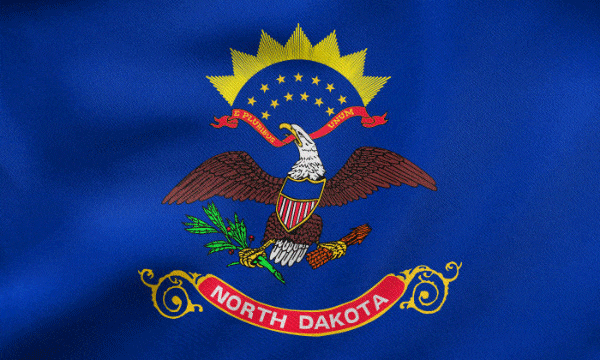 History North Dakota was explored in 1738-1740 by French Canadians led by Sieur de la Verendrye. In 1803, the U.S. acquired most of North Dakota from France in the Louisiana Purchase. Lewis and Clark explored the region in 1804–1806, and the first settlements were made at Pembina in 1812 by Scottish and Irish families while this area was still in dispute between the U.S. and Great Britain. In 1818, the U.S. obtained the northeast part of North Dakota by treaty with Great Britain and took possession of Pembina in 1823. However, the region remained largely unsettled until the construction of the railroad in the 1870s and 1880s. North Dakota is the most rural of all the states, with farms covering more than 90% of the land. North Dakota ranks first in the nation's production of spring and durum wheat; other agricultural products include barley, rye, sunflowers, dry edible beans, honey, oats, flaxseed, sugar beets, hay, beef cattle, sheep, and hogs. Recently, manufacturing industries have grown, especially food processing and farm equipment. The state's coal and oil reserves are plentiful, and it also produces natural gas, lignite, clay, sand, and gravel. The Garrison Dam on the Missouri River provides extensive irrigation and produces 400,000 kilowatts of electricity for the Missouri Basin areas. Known for its waterfowl, grouse, pheasant, and deer hunting and bass, trout, and pike fishing, North Dakota has 20 state parks and recreation areas. Points of interest include the International Peace Garden near Dunseith, Fort Union Trading Post National Historic Site near Williston, Knife River Indian Villages National Historic Site in Stanton, the State Capitol at Bismarck, the Badlands, Theodore Roosevelt National Park, and Fort Abraham Lincoln State Park.
|
North Dakota
Read this profile of North Dakota to learn about the state's history, points of interest, and government. Also find interesting facts about each state, including the state's motto, symbols, and when it entered the union.





